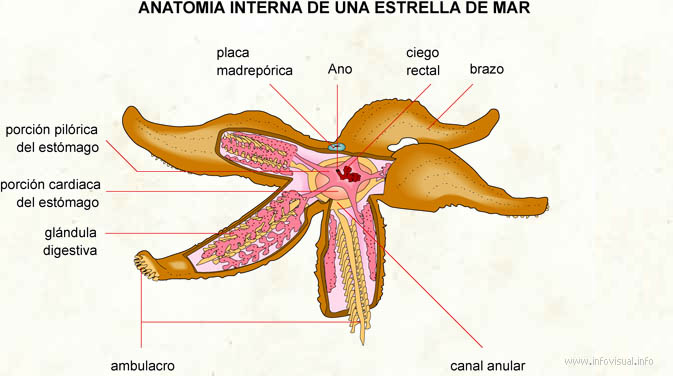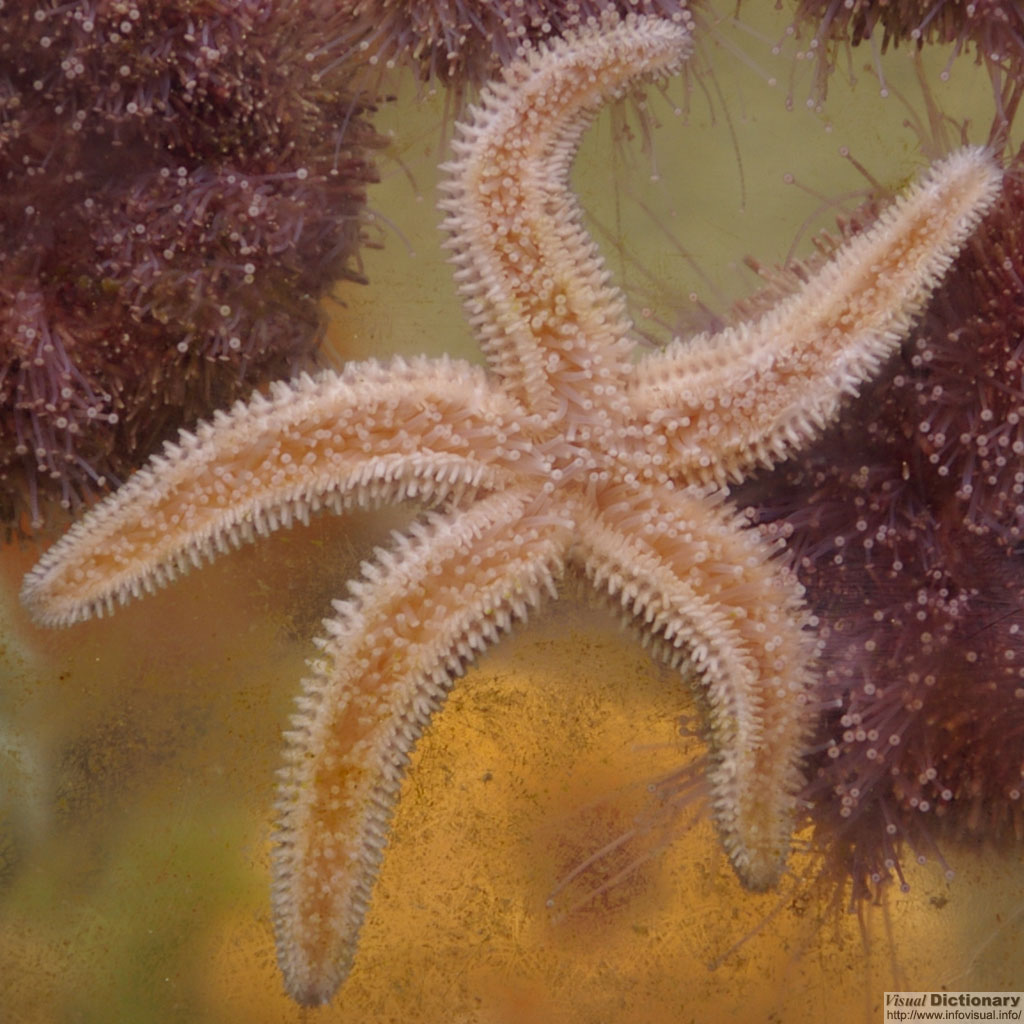Estrella de mar

Placa madrepórica: orificio del sistema acuífera de la estrella de mar.
Ano: orificio terminal del tubo digestivo de la estrella de mar.
Ciego rectal: canal de dirección única relativo al recto.
Brazo: miembro de la estrella de mar.
Canal anular: conducto de la estrella de mar que forma un anillo.
Ambulacro: órgano de locomoción de la estrella de mar.
Glándula digestiva: órgano de la estrella de mar que segrega enzimas digestivas.
Porción cardiaca del estómago: parte del estómago de la estrella de mar que sirve la circulación de la sangre.
Porción pilórica del estómago: parte del estómago de la estrella de mar que está conectado al duodeno.
Foto :

Starfish (properly called sea stars) are any echinoderms belonging to the class Asteroidea. The names "sea star" and "starfish" are also used in a broader sense to include the closely related brittle stars, which make up the class Ophiuroidea. Starfish exhibit a superficially radial symmetry. They typically have five or more "arms" which radiate from an indistinct disk (pentaradial symmetry). However, the evolutionary ancestors of echinoderms are believed to have had bilateral symmetry. Starfish do exhibit some superficial remnant of this body structure, evident in their larval pluteus forms.
Starfish do not rely on a jointed, movable skeleton for support and locomotion (although they are protected by their skeleton), but instead possess a hydraulic water vascular system that aids in locomotion. The water vascular system has many projections called tube feet on the ventral face of the starfish's arms which function in locomotion and aid with feeding. The star fish usually hunt for shelled animals such as oysters and clams. They have two stomachs. One stomach is used for digestion, and the other stomach can be extended outward to engulf and digest prey. This feature allows the starfish to hunt prey that is much larger than its mouth would otherwise allow. Starfish are able to regenerate lost arms. A new starfish may be regenerated from a single arm attached to a portion of the central disk.
Starfish are composed of a central disc from which arms sprout in pentaradial symmetry. Most starfish have 5 arms, but some have more or fewer. Some starfish have shown differing numbers of limbs within a single species. The mouth is located underneath the starfish, on its ventral surface. The spiny upper surface is called the aboral or dorsal surface. On the aboral surface there is a structure called the madreporite, a small white spot located slightly off-center on the central disc which acts as a water filter and supplies the starfish's water vascular system with water to move. Porcellanasteridae employ additional cribriform organs used to generate current in the burrows made by these infaunal starfish. While having their own basic body plan, starfish radiate diversely in shapes and colors, the morphology differing between each species. A starfish may have dense rows of spines as a means of protection, or it may have no spines at all. Ranging from nearly pentagonal to gracile stars like those of the Zoroaster genus.
The body cavity also contains the water vascular system that operates the tube feet, and the circulatory system, also called the hemal system. Hemal channels form rings around the mouth (the oral hemal ring), closer to the top of the starfish and around the digestive system (the gastric hemal ring). A portion of the body cavity called the axial sinus connects the three rings. Each ray also has hemal channels running next to the gonads.